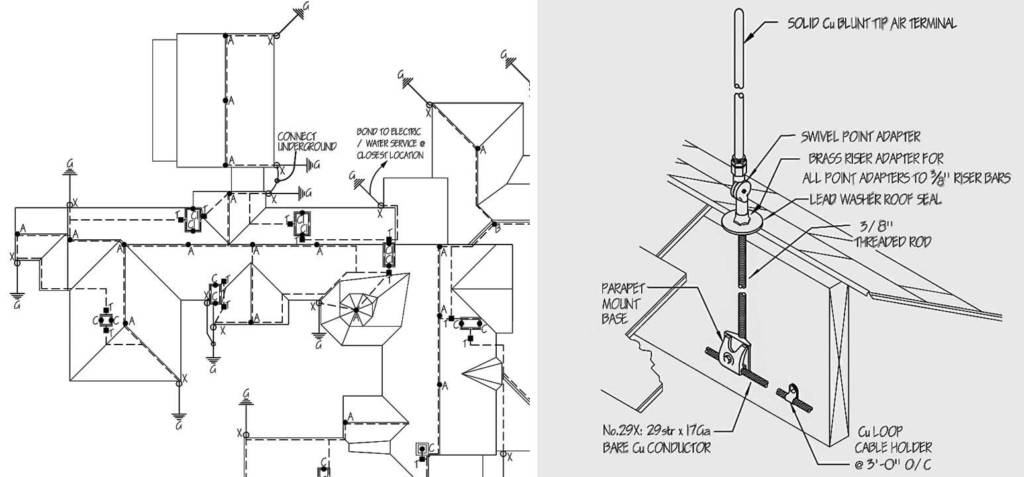
by Jennifer A. Morgan, CSI, and Michael Chusid, RA, FCSI, CCS
Reroofing and roof maintenance are seldom as simple as just applying a new layer of roofing. Indeed, they can often require selective demolition, roof deck repair and penetrations, insulation, new rooftop equipment, flashings, and repair and extension of other existing work. Lightning protection systems should be added to this list of related work.
There is a natural affinity between roofing and lightning protection systems (LPS). Not only are they co-located on the highest portions of the building envelope, but they also each protect the building against potentially hazardous meteorological events. Roofing receives rain and directs it to drains that conduct water safely to ground, while air terminals receive lightning strikes and then direct them to conductors that lead electrical surges safely to ground.
If a building already has lightning protection, removal and re-establishment of some LPS components will usually be required to accommodate reroofing activities. If an existing building does not have lightning protection, reroofing provides a cost-effective opportunity to install LPS.
Rooftop LPS components include:
- air terminals (colloquially, ‘lightning rods’);
- strike termination devices;
- cables to interconnect air terminals and bond rooftop equipment;
- through-structure penetration devices if required to connect exterior conductors to conductors inside the building; and
- related fasteners and fittings.
To ensure the integrity of the lightning protection, additional LPS-related work may be required below the roof, including:
- installing down conductors to bring current from roof to ground level;
- grounding electrodes;
- bonding to equipment and systems inside the building; and
- using surge-protective devices.
While the authors have discussed these and other architectural considerations of lightning protection in previous articles, this article elaborates on specification and coordination of lightning protection vis-a-vis reroofing. (For more, see “Lightning Protection and the Building Envelope,” in the August 2015 issue of The Construction Specifier or the online article, “Risk Assessment and Costs for Lightning Protection.”)






